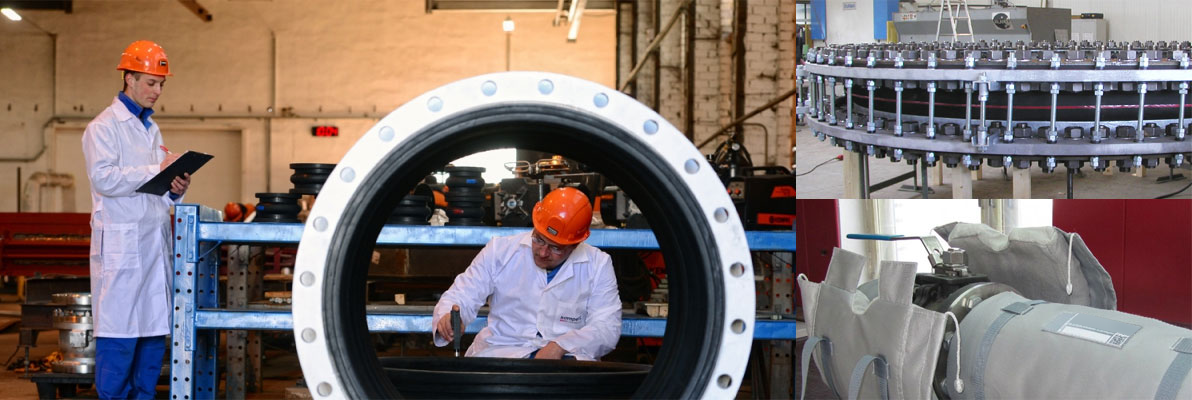

About rubber expansion joints
Rubber expansion joints, or vibration joints - are flexible joints made of natural or synthetic elastomers and used to compensate for temperature movements of pipelines, misalignment of pipelines, as well as to eliminate and reduce vibration and absorption of noise produced by pipelines, pumps and other mechanisms.
Rubber expansion joints are installed on cooling, heating and ventilation systems at various plants and enterprises, nuclear power plants and ships, and they are also used in urban water supply and sewage systems, water treatment plants and effluent treatment plants, pumps, turbines and boilers to compensate for large temperature movements, eliminate oscillations, vibration and noise, water hammer absorptions.
Despite the existing limitations in the operating parameters (maximum working temperature 130 ° C and maximum working pressure 16 atmospheres), rubber expansion joints have several advantages over other types of expansion joints:
- relatively lightweight, requiring no special installation equipment;
- flexibility of vibration joints permits them to recover from movements, deformation requires less effort;
- natural and synthetic elastomers are not subject to fatigue or embrittlement and prevent any electrolytic action;
- heat loss is reduced, while u-shaped hinges increase heat loss;
- rubber expansion joints are made of various types of elastomers, each of them is selected depending on the operating conditions and the medium, which increases operation life of the expansion joint and increases its corrosion, erosion and abrasive materials resistance;
- no gaskets required;
- significantly reduce the level of vibration and noise transmission in piping systems because the elastomeric composition of the joint acts as a dampener;
- the elastomeric type expansion joints provide good resistance against shock stress from water hammer or pump cavitation.
27.04.2020
